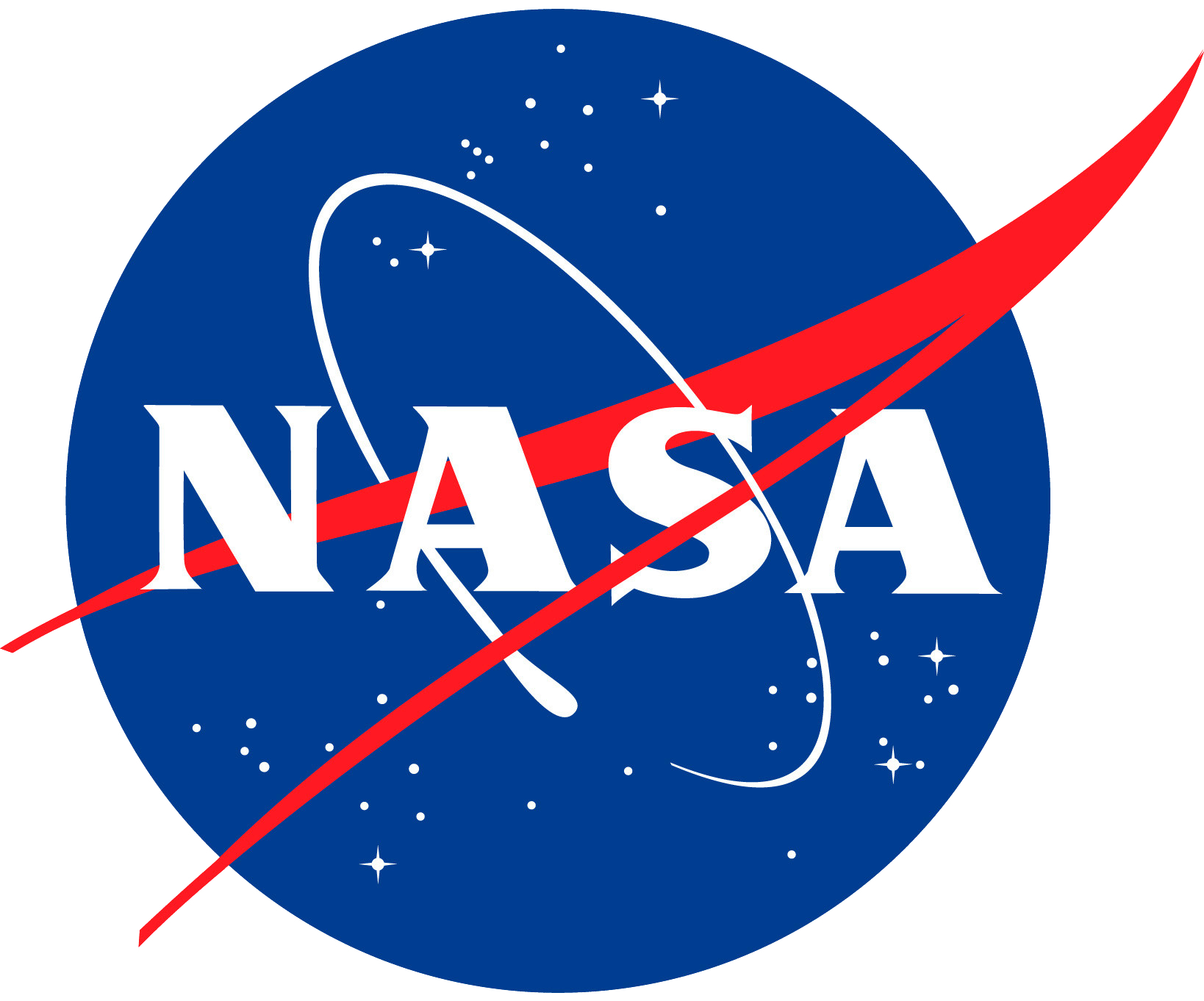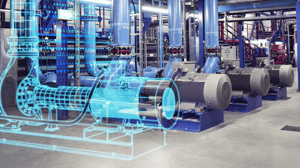
Capabilities
Fathom helps you design safe, more efficient systems while aligning designs with industry codes and standards.




Fathom Highlights
Evaluate pump performance, including variable speed, impeller trim, NPSH, and system curve interaction to size equipment accurately and optimize energy use.
Simultaneously calculate capital costs and ongoing operational energy expenses to design systems that balance budget and efficiency.
Jump-start modeling with an extensive database of pipes, fittings, and fluids customizable for your needs.
Model and compare multiple design alternatives and operating conditions in a single file, saving time and improving decision-making.
Modeling features
Pumps
Variable Speed Modeling – Simulate how adjustable pump speeds affect system behavior and performance.
- Impeller Trimming – Evaluate performance shifts due to impeller diameter changes.
- Wire-to-Water Efficiency – Accurately size motors by considering combined pump, motor, and VFD efficiencies.
- NPSH Analysis – Automatically calculate Net Positive Suction Head (available vs. required) to avoid cavitation risks.
- Pump & System Curve Interaction – Visualize where the pump curve intersects with the system curve, including composite efficiency curves.
- Pump Sizing & Selection Support – Analyze flow rates, heads, and energy use to determine optimal pump sizing.
- Transient Startup/Shutdown Conditions – Model pump ramp-up and coast-down behavior in extended time simulations (with optional add-ons).
- Positive Displacement Pump Support – Include acceleration head losses and simulate flow pulsations where applicable.

Pipes
- Pipe Sizing – Optimize pipe diameters based on flow, velocity, and cost constraints.
- Frictional Loss Calculation – Accurately compute losses using Darcy-Weisbach or Hazen-Williams methods for a wide range of pipe materials.
- Heat Transfer in Pipes – Simulate thermal effects like heat gain/loss through pipe walls, insulation, or buried pipelines.
- Slurry & Non-Newtonian Flow Modeling – Account for viscosity and frictional effects from complex fluids and multi-component slurries.
- Pipe Elevation and Slope Effects – Automatically calculate static head changes due to vertical and sloped pipe segments.
- Pipe Material & Roughness Libraries – Access built-in databases with customizable pipe materials and surface roughness values.
- Multi-Scenario Pipe Configurations – Evaluate how pipe length, material, or routing changes affect system performance across design variants.
- Dynamic Minor Loss Modeling – Include detailed minor losses from bends, valves, fittings, and entrance/exit conditions.

Valves
- Wide Range of Valve Types - Model globe, gate, ball, butterfly, check, pressure relief, control, throttle, and specialty valves.
- Control Valve Simulation - Simulate pressure-reducing, pressure-sustaining, and flow control valves with dynamic setpoint tracking and authority evaluation.
- Check Valve Behavior - Model swing, lift, and nozzle check valves that allow forward flow and block reverse flow, with optional dynamic behavior in A Impulse.
- Dynamic Valve Closure (Impulse) - Analyze surge effects caused by valve opening/closure speed and timing, which are critical for water hammer protection.
- Relief & Bypass Valves - Simulate pressure-activated valves that open to relieve excess system pressure or redirect flow automatically.
- Custom Valve Characteristics - Input user-defined Cv, K, or flow characteristic curves (linear, equal %, quick opening) based on manufacturer data.
- Transient Valve Operation (Impulse) - Define valve actuator speed, delay times, and stroke curves to evaluate system response to sudden valve actions.
- Minor Loss Valve Representation - Optionally model valves as equivalent K-factors or resistance elements for simplified loss modeling.
- Valve Sizing Tools - Automatically calculate the required Cv for a given flow and pressure drop, aiding proper selection.
- Scenario-Based Valve Control - Enable, disable, or adjust valve settings across different operating conditions using Scenario Manager.

Flow properties
- Incompressible Flow – Accurately simulate both liquid and low-velocity gas systems with appropriate physics.
- Non-Newtonian Fluid Modeling – Handle shear-thinning and shear-thickening fluids with built-in viscosity models.
- Multi-Component Fluid Support – Model up to four-component non-settling slurry mixtures to reflect complex fluid compositions.
- Temperature-Dependent Properties – Adjust fluid density and viscosity dynamically based on thermal conditions and heat transfer.
- Cavitation Risk Analysis – Detect cavitation-prone conditions via automatic NPSH calculations and vapor pressure tracking.
- Realistic Turbulent and Laminar Flow – Automatically switch flow regime models based on Reynolds number calculations.
- Extensive Fluid Libraries – Choose from hundreds of built-in fluids, including NIST REFPROP and ASME Steam Tables data.
- Custom Fluid Definition – Define user-specific fluid properties, including density, viscosity, heat capacity, and thermal conductivity.
- Chempak Database - An optional Chempak add-on utility provides a thermophysical database of almost 700 fluids

Import/Export capabilities
- Import CAESAR II® Neutral Files – Bring in piping layouts and connectivity directly from CAESAR II stress models.
- Import PCF (Piping Component Files) or Revit (.RVT) – Convert 3D CAD piping designs into hydraulic models for simulation and analysis.
- Import GIS Shapefiles – Leverage geographic piping layouts from GIS systems to generate model geometry.
- Excel Data Integration – Import model inputs (e.g., pipe data, junction settings) and export detailed output results for external processing.
- Scenario File Branching – Export and re-import individual scenarios or full sets for collaboration or archiving.
- Report Export Options – Output tabular results, graphs, and scenario comparisons in customizable report formats (PDF, Excel, CSV).
- Copy/Paste from Spreadsheets – Rapidly build or modify models by pasting pipe and junction data directly from Excel or text tables.
- Template Model Reuse – Export models or components as templates to standardize modeling across teams and projects.

Scenario manager
The Scenario Manager capabilities are one of the most valuable and time-saving features for system design and comparison:
- Design Iteration Tracking – Safely explore “what-if” conditions, pump failures, or demand changes without losing your base model.
- Hierarchy-Based Scenario Tree – Organize scenarios in a structured tree with inheritance to avoid repetitive data entry and maintain consistency.
- Easy Switching Between Scenarios – Instantly toggle between scenarios for side-by-side analysis, design evaluation, and troubleshooting.
- Multi-Case Modeling in One File – Store unlimited design alternatives, operating conditions, or failure scenarios within a single project.
- Input Inheritance – Share common data across scenarios (e.g., geometry, fluids) while varying only selected inputs—greatly reducing maintenance.
- Scenario Comparison Tool – Highlight differences in input data and output results across multiple cases for clear, data-driven decisions.
- Scenario Export & Reuse – Export individual scenarios or branches for reuse in other models or for team collaboration.
- Batch Run Capability – Run multiple scenarios automatically and review results efficiently, saving time during optimization studies.

Reporting features
Output
- Detailed Hydraulic Results – View pressure, flow rate, velocity, head loss, Reynolds number, and NPSH for every pipe and junction.
- Color-Coded Visual Output – Use gradient-based color mapping on the model schematic to instantly visualize flow rates, pressure zones, or energy losses.
- Pump and System Curves – Generate interactive pump and composite system curves showing operating points, efficiency, and head.
- Scenario Comparison Reports – Compare key input/output values across multiple scenarios in a tabular format to identify trends or impacts.
- Customizable Graphs and Charts – Create line, bar, and XY plots for any variable across pipes or junctions, time steps (if add-ons used), or operating conditions.
- Energy & Cost Reports – Output operating power, energy usage, and estimated costs for pumps, enabling lifecycle efficiency analysis.
- Pipe and Junction Summary Tables – Export comprehensive result tables (e.g., pressure, flow, velocity) for documentation and audit trails.
- Export to Excel, CSV, PDF – Save any report or dataset in common formats for collaboration, archiving, or post-processing.
- Warning and Alert Flags – Automatically highlights hydraulic issues such as cavitation risk, choked flow, or negative pressures with built-in design alerts.
- Unit Customization – Display results in user-preferred units (SI, Imperial, mixed) and apply filters to streamline output review.

Visual results
- Color-Gradient Schematic Overlays – Visually map variables like flow rate, pressure, velocity, and head loss directly onto the pipe network schematic.
- Dynamic Result Layer Toggle – Instantly switch between different visual overlays (e.g., flow vs. pressure vs. Reynolds number) to focus your analysis.
- Pump & System Curve Visualization – Generate and overlay pump curves with system curves to assess operating points, efficiency, and control interactions.
- Flow Direction Arrows – View automatically generated arrows showing the direction of flow through each pipe segment.
- Graphical Warning Flags – Display visual alerts (e.g., cavitation, choked flow, high velocity) as icons or highlights on the schematic for quick issue detection.
- Customizable Result Labeling – Show or hide numerical result labels (e.g., pressure or flow rate) at specific junctions or pipes for targeted display.
- XY and Bar Graph Plots – Create charts for any variable versus distance, pipe number, scenario, or time (with add-ons like XTS).
- Zoom & Pan Navigation – Interact with the schematic using zoom and pan tools to focus on specific regions of the system.

Graph results
- XY Graphing of Variables – Plot any result variable (e.g., pressure, velocity, head) against distance, pipe number, or other parameters.
- Scenario Overlay Graphs – Compare multiple scenarios side-by-side by overlaying result curves in a single graph for trend and sensitivity analysis.
- Bar Graph Displays – Visualize discrete variables (e.g., flow rates, pump power) across system elements using easy-to-read bar charts.
- Time-Based Plotting (with Add-ons) – In Impulse or Fathom with XTS, graph transient results such as pressure surges or flow oscillations over time.
- Dual-Axis Graphs – Plot two related variables on separate Y-axes for correlated data visualization (e.g., head vs. efficiency).
- Exportable Graphs – Export all graphs to image formats or embed them into reports and presentations with legends and titles.
- Interactive Graph Customization – Modify axis ranges, data points, units, line styles, and legends to tailor visuals to your audience.
- Graph Templates and Reuse – Save frequently used graph setups and apply them across different models or scenarios for consistent reporting.

Supported codes & standards
Hydraulic Institute Standards
- ANSI/HI 9.6.3‑2017 – Rotodynamic Pumps: Guideline for Operating Regions
- Assists with ensuring pumps operate within the Preferred Operating Range (POR) and best efficiency zone
- ANSI/HI 9.6.7‑2021 – Effects of Liquid Viscosity on Rotodynamic Pump Performance
- Enables viscosity correction calculations for pumps handling fluids with viscosity above water
- ANSI/HI 9.8‑1998 – Rotodynamic Pumps: Intake Design & Submergence
- Supports inlet/submergence analysis to minimize swirl, cavitation, and poor performance
- ANSI/HI 6.1‑6.5‑2015 – Reciprocating (Positive‑Displacement) Pump Definitions & Acceleration Head
- Includes performance metrics and acceleration head losses for PD pumps
- ANSI/HI 12.1‑12.6‑2016 – Rotodynamic (Centrifugal) Slurry Pump De‑Rating
- Provides pump de‑rating calculations for slurries based on the ANSI/HI model or 4‑component

ASME
- ASME B31 Series – Pressure Piping Codes - pipe flow modeling helps engineers design systems that operate safely within allowable pressure and mechanical limits outlined in ASME B31.1 (Power Piping), B31.3 (Process Piping), and others. (Fathom and Arrow)
- ASME Boiler and Pressure Vessel Code (BPVC) - Addresses the allowable stress, temperature, and pressure limits for vessels and piping components in high-pressure or thermal systems. Datacor Pipe Flow Modeling software can model pipe wall temperatures and operating pressures that align with these limits. (Fathom and Impulse)
- ASME Boiler & Pressure Vessel Code, Section VIII Non-Mandatory Appendix M – Used in gas relief piping design to validate allowable pressures and device sizing
- ASME Transient Pressure Criteria (Waterhammer & Surge) - Impulse evaluates transient pressure surges to ensure that maximum and minimum pressures stay within ASME allowable limits. Helps design surge suppression strategies using check valves, accumulators, and relief devices in compliance with ASME’s surge force guidelines.
- ASME Energy Efficiency Standards (e.g., ASME EA-2, ISO 14414) - Fathom supports energy audits and pump system assessments in compliance with ASME/ISO energy optimization standards. Fathom’s wire-to-water efficiency and lifecycle cost tools align with ASME EA-2 (Energy Assessment for Pumping Systems).
- ASME Valve Standards (e.g., B16.34) - Allows simulation of valve pressure drops, Cv sizing, and allowable pressure ratings in line with ASME B16.34, which defines valve pressure-temperature ratings. (Fathom and Arrow)
- ISO/ASME 14414:2015 – Pumping System Energy Assessment: Enables energy audits and optimization in pump systems per ISO/ASME energy efficiency standards

NFPA
- NFPA 13 – Standard for the Installation of Sprinkler Systems - Simulate sprinkler system hydraulics to ensure flow rates and pressures meet NFPA 13 performance criteria. Engineers can model pipe networks, friction losses, and pressure zones to validate sprinkler performance. (Fathom and Impulse)
- NFPA 15 – Standard for Water Spray Fixed Systems for Fire Protection - Supports the design and analysis of deluge and water spray systems. Fathom can simulate multiple flow paths, nozzles, and elevation effects to confirm system delivery and uniformity. (Fathom)
- NFPA 20 – Standard for the Installation of Stationary Pumps for Fire Protection - model fire pump performance, including interaction with system curves, suction pressure, and NPSH. Ensures pump sizing and flow characteristics align with NFPA 20 requirements. (Fathom)
- NFPA 22 – Standard for Water Tanks for Private Fire Protection - Helps engineers evaluate tank drainage behavior, pressure losses, and how tanks integrate into firewater networks. (Fathom)
- NFPA 24 – Standard for the Installation of Private Fire Service Mains and Their Appurtenances - Supports modeling of private fire mains, hydrants, and appurtenances to assess pressure zones and flow delivery per code. (Fathom)
- NFPA 25 – Standard for the Inspection, Testing, and Maintenance of Water-Based Fire Protection Systems - While modeling doesn’t replace field testing, it supports design validation and troubleshooting during inspection reviews by modeling performance under test conditions. (Fathom and Impulse)
- NFPA 68 – Standard on Explosion Protection by Deflagration Venting - Arrow can simulate gas flow dynamics in vent lines, ducts, or manifolds used to relieve overpressure in explosion-prone environments. Supports modeling vent sizing and backpressure effects that affect the efficiency of deflagration venting. (Arrow)
- NFPA 69 – Standard on Explosion Prevention Systems - Helps model airflow through suppression systems and isolation valves, ensuring adequate flow capacity and response times in the event of pressure surges or ignition risks. Can assist in validating pressure relief and duct routing design. (Arrow)
- NFPA 654 – Standard for the Prevention of Fire and Dust Explosions from the Manufacturing, Processing, and Handling of Combustible Particulate Solids - Used to assess dust collection and pneumatic conveying systems, particularly in terms of airflow, venting, and transport velocity. Arrow supports airflow validation and design of safe vent paths in compliance with NFPA 654 system layout requirements. (Arrow)
- NFPA 91 – Standard for Exhaust Systems for Air Conveying of Vapors, Gases, Mists, and Particulate Solids - Arrow helps validate pressure drop, flow velocity, and gas-handling capacity for industrial exhaust and duct systems, particularly in explosive or hazardous environments. Ensures systems meet velocity requirements to prevent condensation or accumulation of flammable materials. (Arrow)

API standards
- API RP 520 – Design & Installation of Pressure-Relieving Systems in Refineries
- Used for proper sizing and layout of gas relief system piping.
- ANSI/API 526 (7th Ed., 2017) – Flanged Steel Pressure‑Relief Valves: Guides modeling of relief valve behavior, inlet/discharge design, and orifice sizing.
- API 610 (via Fathom & Arrow integration) – Centrifugal Pumps for Petroleum & Gas Industries: Drives preferred operating range (POR) modeling and pump reliability compliance.
- API Pump Pulsation Pressures – Used in Impulse to model pressure pulsation and valve-induced surges per API guidelines

International standards
- Pipe Material Standards (EN, DIN, JIS, others) - Datacor Pipe Flow Modeling’s built-in pipe material libraries pull directly from global standards such as DIN (Germany), EN (European), and JIS (Japan) in addition to ASTM/ANSI and ASME sources—enabling users worldwide to apply regionally relevant pipe dimensions, roughness, and thermal property values. Users can choose to connect or disconnect specific libraries by region.
- ASME/ISO Energy Efficiency Standards (ISO/ASME 14414) - Fathom and Arrow support ISO/ASME 14414:2015, which is globally recognized for pump system energy assessments and efficiency evaluations beyond U.S. markets.
- ASTM C1055 – Surface Temperature Allowables (Global Safety Guide) - Datacor Pipe Flow Modeling tools generate outputs in line with ASTM C1055, which is used internationally—not just in the U.S.—to assess safe contact temperatures from heated pipes. This allows compliance with safety practices valid in many regions.
- ASME/ISO & API Gas Relief Piping Standards - Software modules like Arrow also reference and support ASME, API, and ISO standards for gas relief system design. These combined standards often apply internationally, particularly in regions where ISO compliance is preferred or required.

Other standards
- ASTM Material Standards: Incorporates pipe and material properties consistent with ASTM specifications for dimensions, pressure ratings, and roughness.
- AWWA Pipe Standards: Includes data for waterworks and industrial piping systems that follow AWWA guidelines.
- MSS-SP Valve Standards: Supports valve dimensions, pressure classes, and configurations defined by the Manufacturers Standardization Society.

Add-on Modules
Engineering extension tools that can help you quickly and efficiently complete projects. Modules can work individually or together within Fathom and your existing Fathom models.
Models the effects of pumping fluids containing settling solids using the Wilson/GIW method. Used with either Fathom or Impulse.
Identifies input parameters that yield desired output values and simulates control functions. Used with either Fathom or Arrow.
Models dynamic system behavior in steady-state flow and how critical system parameters vary over time. Used with either Fathom or Arrow.
Helps identify pipe acoustical frequencies to avoid resonance from excitation, especially in systems with positive displacement pumps and reciprocating compressors. Used with either Impulse or xStream
Evaluates the complex interaction of system variables to reveal combinations of cost savings. Used with either Fathom or Arrow.
The Chempak add-on utility provides a thermophysical database of almost 700 liquids and 600 gases with mixing capability.
Discuss your pipe flow modeling software goals with a simulation expert.
This analysis would have been nearly impossible using hand calculation methods. The ability to have the control valves balance 24 branches simultaneously was great.”